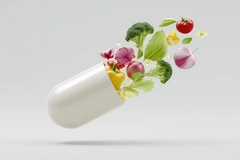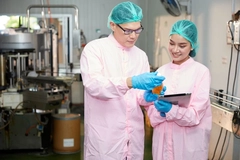UK experts call for update to “woefully inadequate” alcohol labeling following sugary wine revelation

17 Feb 2022 --- Health experts in the UK are calling on the government to make information on nutrition values like calories and sugar content mandatory on alcoholic drinks – which would bring them in line with all other F&B products. They highlight that other countries in the EU are also lacking relevant regulation.
“Alcohol was exempt from food and non-alcohol drink labeling under European legislation, and this law has not changed since the UK left the EU,” Sir Ian Gilmore, chair of the Alcohol Health Alliance UK, tells NutritionInsight.
These renewed calls for tightened legislation follow an independent laboratory analysis commissioned by member organizations of the Alcohol Health Alliance.
It found that wine can contain anywhere between 0 g and 59 g of free sugars per bottle, meaning that two medium-sized glasses of some of the most popular wine on the market could contain nearly 30 g of sugar – the upper reference intake.
The two-year wait continues
In 2020, the government committed to holding a consultation on whether to include calorie information on alcohol product labeling. Information on sugar content and ingredients is not included in the plans.
“The government must publish its planned consultation on alcohol labeling without further delay – which we have been waiting for since 2020,” urges Gilmore.
“As well as calorie labeling and nutritional information, we need prominent health warnings and the UK Chief Medical Officers’ low-risk weekly drinking guidelines on labels,” he continues.
Studies suggest that this kind of labeling could help reduce alcohol harm by increasing knowledge of the health risks and prompting behavior change, notes the Alcohol Health Alliance. Goverment guidelines recommend no more than 30 g of free sugars per day for an adult.
Goverment guidelines recommend no more than 30 g of free sugars per day for an adult.
Public backs label overhaul
Currently, alcoholic drinks in the UK are only required to display the volume and strength (in ABV) and common allergens. Information on nutritional values (including calories and sugar content), ingredients, or health warnings is not required and is therefore largely absent from labels.
“Alcohol labeling is woefully inadequate in this country and allows the alcohol industry to decide what information it will and won’t include on its products, despite alcohol claiming the lives of 70 people a day in the UK,” says Alison Douglas, chief executive of Alcohol Focus Scotland.
“Government needs to act now to place mandatory requirements on alcohol manufacturers to display accessible information based on sound evidence of what works and bring alcohol labeling in line with other food and drink products,” adds Dr. Richard Piper, chief executive of Alcohol Change UK.
Additionally, the public is also keen to know what is in their beverages. According to a 2021 YouGov survey published by the Alcohol Health Alliance, 75% of people want the number of units in a product on alcohol labels, 61% want calorie information, and 53% want the amount of sugar.
A global issue
According to Gilmore, only 17% of European Member States currently have laws that demand alcohol producers include ingredients, nutritional values and health information on labels at the same time.
In 2019, Belarus, Kazakhstan and the Russian Federation adopted three technical regulations that oblige producers to include a list of ingredients and nutritional values on the labels of food products and alcoholic beverages.
“We are waiting for the results of this policy to be assessed by an independent audit,” says Gilmore.
He also points to a 2020 Canadian study that found alcohol warning labels, like warnings on packets of cigarettes, are effective tools in helping drinkers make informed decisions.
The study found consumers exposed to the labels were 10% more likely to know about the link between alcohol and cancer and three times more likely to be aware of the low-risk drinking guidelines. Better labeling and the need for transparency is vital to allow people to make informed decisions, argues the Alcohol Health Alliance.
Better labeling and the need for transparency is vital to allow people to make informed decisions, argues the Alcohol Health Alliance.
Consumers may be confused
The analysis included 30 bottles of red, white, rosé, fruit and sparkling wine from the top ten leading wine brands in the UK.
Ultimately, the products containing the most sugar tended to be the lower-strength wines.
“With no legal requirement to display sugar content on alcohol labels, drinkers opting for a lower-strength alcohol choice, perhaps thinking this is a healthier option, are unwittingly upping their daily sugar intake,” notes the Alcohol Health Alliance.
This can lead to an increased risk of health conditions such as Type 2 diabetes and tooth decay.
Taking calories into account
None of the 30 products examined in this study displayed sugar content on their labels, while calorie content was only displayed on 20% of the labels examined.
Alcohol is very energy-dense, with just two medium-sized glasses of the most calorific wines analyzed containing more calories than a McDonald’s hamburger.
The Alcohol Health Alliance notes that for those who drink, alcohol accounts for nearly 10% of their daily calorie intake. Around 3.4 million UK adults consume an additional day’s worth of calories each week – totaling an additional two months of food each year.
However, better-for-you F&B options are becoming increasingly popular, with the alcohol beverage sector being no exception. For example, Uddelaer Sportbier is positioned as an alcohol-free white beer and sports drink.
By Katherine Durrell












